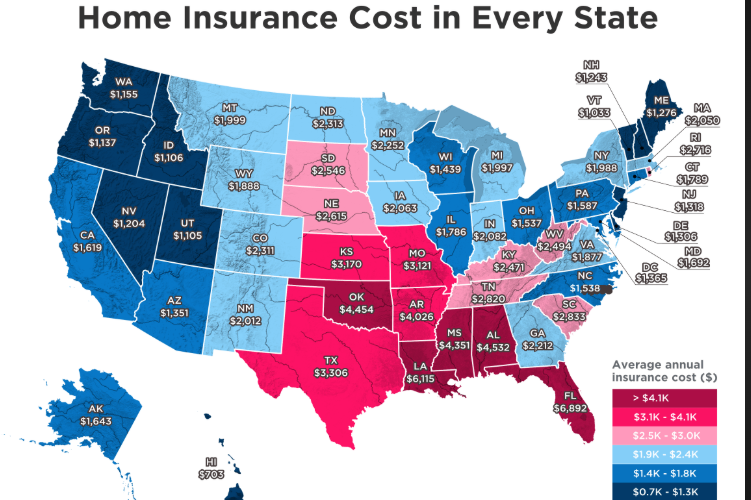“Mortgage Refinance Rates” Looking to save money on your mortgage? Learn how mortgage refinance rates work, current U.S. refinance trends, top lender comparisons, and expert tips to secure the best rates in 2025.
🏠 What Is Mortgage Refinancing? “Mortgage Refinance Rates”
Mortgage refinancing means replacing your current home loan with a new one—usually with better terms, such as a lower interest rate or shorter repayment period. When rates drop or your credit improves, refinancing can help you cut monthly payments or save thousands over the life of your mortgage.
In simple terms, it’s like trading in your old loan for a better deal.
📉 Why Homeowners Refinance Their Mortgage “Mortgage Refinance Rates”
People refinance for many reasons, and understanding your “why” helps determine whether it’s the right move.
- To lower monthly payments – The most common reason. If rates are lower than when you took your loan, refinancing can instantly save you money.
- To shorten the loan term – Moving from a 30-year to a 15-year loan can reduce total interest payments dramatically.
- To switch loan type – You might change from an adjustable-rate mortgage (ARM) to a fixed-rate for long-term stability.
- To cash out home equity – Borrow more than you owe and use the extra funds for renovations, debt consolidation, or investments.
- To remove private mortgage insurance (PMI) – Once your equity exceeds 20%, refinancing helps eliminate this extra cost.
📊 Current Mortgage Refinance Rates in the U.S. (October 2025) “Mortgage Refinance Rates”
Mortgage refinance rates fluctuate daily based on the economy, Federal Reserve policy, and inflation. As of October 2025, the national average refinance rates are as follows:
| Loan Type | Average Rate | Typical APR Range | Notes |
|---|---|---|---|
| 30-Year Fixed Refinance | 6.25% | 6.0% – 6.9% | Most popular; stable payments |
| 20-Year Fixed Refinance | 5.85% | 5.6% – 6.3% | Balance between savings & term |
| 15-Year Fixed Refinance | 5.20% | 5.0% – 5.5% | Shorter term, faster equity build |
| 5/1 ARM Refinance | 6.10% | 5.7% – 6.8% | Low initial rate, then adjustable |
| FHA Refinance | 6.00% | 5.9% – 6.7% | Ideal for moderate credit borrowers |
| VA Refinance | 5.75% | 5.5% – 6.3% | Exclusive for veterans & military families |
💡 Note: Actual rates vary by credit score, loan amount, location, and lender policies.

🏦 Comparison of Top Mortgage Refinance Lenders (2025) “Mortgage Refinance Rates”
| Lender | 30-Year Fixed | 15-Year Fixed | Highlights |
|---|---|---|---|
| Rocket Mortgage | 6.25% | 5.75% | Fast online process, high approval rate |
| Wells Fargo | 6.40% | 5.95% | Trusted nationwide bank with flexible terms |
| Bank of America | 6.25% | 5.65% | Offers closing cost discounts for customers |
| U.S. Bank | 6.10% | 5.80% | Personalized refinancing guidance |
| PNC Bank | 6.30% | 5.90% | Excellent for homeowners with strong equity |
| Better.com | 6.15% | 5.70% | 100% digital, zero commission fees |
| Chase Bank | 6.20% | 5.85% | Great for current Chase mortgage holders |
💡 How Mortgage Refinance Rates Are Determined “Mortgage Refinance Rates”
Refinance rates depend on a mix of personal financial health and market conditions. Lenders analyze risk, economy trends, and your creditworthiness. Here’s what matters most:
| Factor | Impact |
|---|---|
| Credit Score | Higher scores (760+) get the lowest rates. |
| Loan-to-Value (LTV) Ratio | The more equity you have, the better your rate. |
| Debt-to-Income Ratio (DTI) | Lenders prefer DTI under 43%. |
| Loan Term | Shorter loans = lower rates, less total interest. |
| Market Trends | Fed interest rate cuts or hikes affect mortgage rates quickly. |
| Points Paid | Paying “discount points” upfront can lower long-term rates. |
🧮 Example: How Refinancing Can Save You Money “Mortgage Refinance Rates”
Scenario A:
- Original loan: $300,000 at 7.25% (30 years)
- New refinance: $300,000 at 6.25% (30 years)
Old payment: $2,046/month
New payment: $1,847/month
Savings: ~$199/month (~$2,388/year)
Even after $3,000 in closing costs, you’d break even in about 15 months and save $30,000+ over the loan’s life.
🏁 When Refinancing Makes Sense
You should consider refinancing if:
- You can reduce your rate by at least 0.5% or more.
- You plan to stay in the home for 3+ years to recover costs.
- Your home equity is 20% or higher.
- Your credit score has improved since the original mortgage.
- You want to switch from an ARM to a fixed-rate loan.
If your current loan already has a low fixed rate, refinancing might not be worth the fees.
⚖️ Pros and Cons of Mortgage Refinancing
| ✅ Pros | ❌ Cons |
|---|---|
| Lower interest rates and payments | Closing costs can be 2–5% of loan amount |
| Shorten loan term and build equity faster | You reset the loan clock |
| Switch from variable to fixed rates | Possible prepayment penalties |
| Access home equity for cash | Your total debt may increase |
| Remove PMI on conventional loans | Refinancing too often hurts credit |
💬 Expert Tips to Get the Best Refinance Rate
- Improve your credit score: Pay bills on time, reduce credit utilization, and fix report errors.
- Shop around: Get quotes from at least 3–5 lenders. Even 0.25% difference can save thousands.
- Compare APR, not just rate: APR includes fees and closing costs.
- Negotiate closing costs: Many lenders offer credits or fee waivers if you have good credit.
- Lock your rate: Once you find a good rate, lock it before market changes.
- Consider points: Buying points upfront (1 point = 1% of loan) lowers rates long-term.
- Avoid big purchases: Don’t open new credit cards or loans before refinancing.
📈 Economic Trends Affecting 2025 Refinance Rates
In 2025, refinance rates are influenced by several macroeconomic factors:
- Federal Reserve Policies: After multiple rate hikes in 2023–24, the Fed is expected to stabilize or slightly cut rates in late 2025.
- Inflation Control: As inflation cools, mortgage rates are gradually decreasing.
- Housing Market: Demand for refinancing is moderate as homeowners wait for rates below 6%.
- Global Events: Economic stability, oil prices, and employment rates impact Treasury yields—the benchmark for mortgage rates.
Forecast: Experts predict refinance rates may drop to around 5.75% by mid-2026 if inflation continues to fall.
💵 Cash-Out Refinancing: A Smart Option or Hidden Trap?
Cash-out refinancing allows you to take a new mortgage larger than your old balance and pocket the difference.
Example:
- Home value: $450,000
- Current loan: $250,000
- New refinance: $350,000
- You get $100,000 in cash (minus closing costs).
✅ Pros:
- Use cash for remodeling, college, or debt consolidation.
- Interest rates are lower than credit cards or personal loans.
❌ Cons:
- You owe more money on your house.
- If property values fall, you risk going “underwater.”
- Longer loan = more interest over time.
Use this method carefully—only if the cash will improve your long-term financial position.
🧠 Real-World Story
Emily’s Refinance Journey
Emily bought her home in 2020 with a $350,000 loan at 7.2%. By 2025, rates dropped and her credit score improved from 690 to 760. She refinanced with a 5.9% 30-year fixed loan.
- Monthly savings: $250
- Annual savings: $3,000
- Total lifetime savings: ~$60,000
Refinancing helped her save big—and she used part of her savings for home renovations.
❓ Frequently Asked Questions
Q1: How much does refinancing cost?
Closing costs are typically 2–5% of your loan amount, covering appraisal, origination, and title fees.
Q2: How long does the refinance process take?
Usually 30–45 days, depending on lender efficiency and documentation.
Q3: Can I refinance with bad credit?
Yes, but your rate will be higher. FHA or VA refinance programs are more flexible for lower credit scores.
Q4: Does refinancing hurt my credit?
A small temporary dip (5–10 points) from hard inquiries, but it recovers quickly.
Q5: What is a “no-closing-cost refinance”?
The lender pays your upfront fees in exchange for a slightly higher interest rate.
Q6: Is refinancing worth it in 2025?
Yes—if you can reduce your rate by 0.5–1%, stay in the home for a few years, and have strong credit.
🏁 Conclusion
Mortgage refinancing remains one of the smartest financial tools for homeowners looking to save money or tap into home equity.
With rates averaging 6.0–6.5% in 2025, now may be a good time to explore options—especially if your existing loan rate is higher. Always compare lenders, calculate total costs, and ensure your refinancing aligns with long-term goals.
